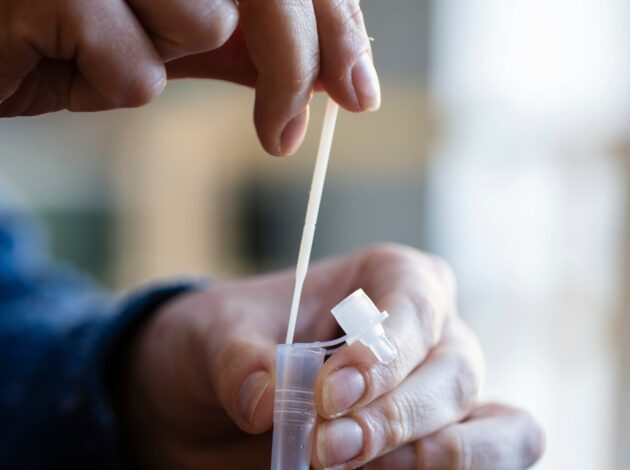Launched at speed soon after the onset of the COVID-19 pandemic, the ONS-led COVID-19 Infection Survey has achieved international recognition as a “gold standard” source of vital data. Two years – and around nine million swab tests – later it continues to provide unique insight on infections and antibodies in the general population of the UK. In this post Esther Sutherland reflects on the survey’s achievements to date and looks at what’s next for the survey.
Impact of the CIS
The real impact of the COVID-19 Infection Survey (CIS) could be wider than we’ll ever know. I speak to users on a weekly basis and hear how closely they have watched our results and how they have used the data to inform personal, business and policy decisions to keep everyone in our society safe. This is a phenomenal achievement.
Over the past two years the CIS has become established as the ‘gold standard’. for understanding the level of COVID-19 positivity in the community population across the UK. The CIS has provided evidence, amongst lots of other data sources, to inform the Government’s pandemic response, ensuring data was at the heart of decision making.
Week in, week in out we have provided fresh estimates of the proportion of number of people infected -with and without symptoms in each part of the UK. We’ve tracked the emergence and progress of new variants of concern, assessed the effectiveness of COVID-19 vaccines and gauged the rate of reinfections.
The landscape is changing
As we learn to live with COVID-19 it is clear we still need the CIS to provide evidence on how prevalent COVID-19 is in the community to inform ongoing public health messaging and monitoring. This is particularly important with the changes made to testing across the UK, including the ending of free mass testing and the legal requirement to test and isolate. This means it would be hard to measure how prevalent COVID-19 is in the community population without the CIS.
We will continue to provide estimates over time on the number of people testing positive for COVID-19 in the community across the UK. We will also continue to provide positivity by age and region where we can. However, not everything is the same because the landscape we’re working in has changed and therefore we must adapt too.
Adapting our analysis
As a result of this changing landscape, we will be focussing on the following priorities. Firstly, we want to ensure we maintain the impact we’ve had with our analysis. This means ensuring our analysis is accessible to everyone and answers the questions users have. We’ll do this through increased visibility of the CIS in the news and on social media.
Our headline findings will continue to be posted on our main @ONS Twitter feed.
I have also launched a new Twitter account (@ESutherlandONS) to make it easier for everyone to ask us questions. We’re also going to be developing our Insights page which is an interactive tool where you can find lots of data on COVID-19.
We also want to ensure we are working as efficiently as possible. We will monitor the impact of any change we make to our sample and estimates to improve accessibility and be transparent about this in our Methods article and QMI. We’re also excited to be continuing to work with the Office for Statistics Regulation to maintain our accountability against the Code of Practice for Statistics.
Finally, we want to maximise the use of our data by freeing up more capacity to invest in bespoke analysis. As part of this we are looking at how we may scale up and down our regular outputs depending on the risk COVID-19 is posing to society at any point in time. In periods of low risk, we’ll be reducing our regular outputs to invest in the bespoke analysis, some examples of which are given below.
The future is bright
To meet our priorities there are several areas of analysis which we’ll be exploring using data from the COVID-19 Infection Survey analysis and from the other COVID-19 health data ONS has:
- Understanding who in the population has antibodies and what impact this has on levels of protection.
- Understanding in more detail what happened over the course of the pandemic for example how behaviours changed in response to variants.
- Assessing the risk factors and health outcomes of groups as a result of the pandemic such as if certain local areas or demographic groups were disproportionally impacted by particular waves.
I hope this programme of analysis answers at least some of the questions you might have but, I am always really interested to hear from users. If you have any questions, please feel free to tweet me.
The COVID-19 Health Analysis at ONS will continue to provide important and interesting insights for our users.
Finally, all us in the CIS team would like to a huge and sincere thank you to our participants for their commitment to the survey – and of course to everyone who read our articles or engages with us in some way. Everything you do helps us to make the survey better.
Esther Sutherland is Head of Strategic Development at the ONS
